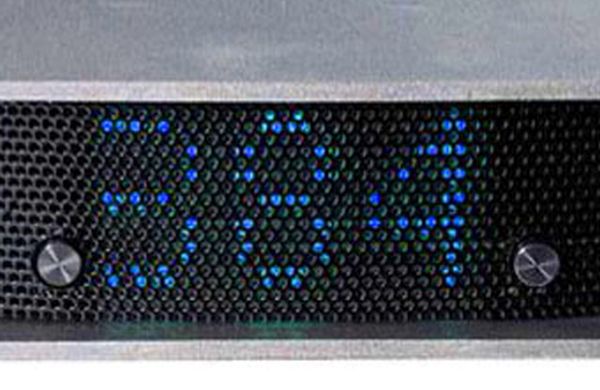
By Lam Seng Fatt
Is the 24-bit/384kHz PCM format the end of the road for the evolution of digital music? Can 24/384 music files finally match analogue? That indeed is the question.
As long ago as January 1995, hi-fi guru Tim de Paravicini – the owner of EAR-Yoshino – had stated in an interview with Audio that: “Ten years ago in Stereophile, I said that digital was never going to work well in the chosen format. Digital should use a 400 kHz sampling rate and 24-bit words. Then it will satisfy the hearing mechanism and won’t have a digital sound. Digital has a ‘sound’ purely because it is based on lousy mathematics. The manufacturers presuppose too simplistic a view of our hearing mechanism.
“But manufacturers don’t want to change – it’s the lowest-common-denominator syndrome. It’s like 525-line television, which allows you only X amount of resolution. With digital, you’ve fixed your resolution parameters, where analog never had that problem.
“I still do work on the vinyl record; it still can be advanced. The number of vinyl molecules passing the needle every second is equivalent to half a gigahertz. So there ain’t a lot wrong with it, fundamentally. You can carry on improving it without losing compatibility.”
Tim was way ahead of his time as he told Stereophile that 10 years before the Audio interview which works out to be in 1985. That was when Philips and Sony were aggressively pushing the newly-launched 16bit/44.1kHz PCM format on CDs to replace LPs.
Tim is not the only hi-fi guru to say that 24/384 (Tim actually said 24/400) is the resolution at which digital files would sound satisfactory.
Rob Watts, the DAC designer for Chord Electronics, said in an interview with Audio Beat on Dec 3 last year: “The 24-bit/384kHz format is the ultimate, it is the future. It is far superior to DSD. In comparison, DSD lacks resolution and detail.”
As I mentioned in an earlier post, we are now entering the era of super hi-res with DACs released in the market which are capable of handling DSD 2.8 and 5.6 and PCM at 24-bit or 32-bit and sampling frequencies of 352.8kHz and 384kHz.
Owner of Chord Electronics John Franks feels his Hugo DAC/headphone amp which accepts 384 PCM and 5.6 DSD will lead the market for the next five years as he does not foresee anything else happening in consumer DACs in that period of time.
Last year, I heard DSD 2.8 being played natively on a Playback Design DAC and also a 24/384 PCM file played back natively. I recall that the DSD file sounded ’rounded’ and had more ‘shape’ while lacking some dynamics but the 384 PCM file had the qualities of DSD and the dynamics of PCM. It had the best of both worlds.
Now, it is possible for audiophiles to check it out for themselves with the new generation of DSD and 384-capable DACs. Just download 24/352.8 and DSD 2.8 and 5.6 files from 2L and 24/384 and DSD files from Kent Poon’s site and play them.
What is my personal view? I think John is right – development in DACs in the next few years will focus on improving DSD 2.8 and 5.6 and PCM 352.8 and 384 conversion while the software side of the business will play catch up. The danger of course is that companies will simply offer upsampled files with 24-bit/96kHz or even 16bit 44.1kHz or 48kHz files as the master copies.
Things would get really interesting when music is recorded at 32bit 384kHz natively and played at that resolution natively.
I have been listening to Kent Poon’s 24/384 files (which – correct me if I am wrong – are converted from DSD recordings) using the Naim DAC-V1 with a laptop using J River v19 and Foobar2000 and I can say that the music sounds very natural without any ‘digititis’ and with great shape and structure. Can it match vinyl? That is another story and it would require playing the same song in 24/384 format and on vinyl which is quite difficult to achieve.
These are interesting times…
